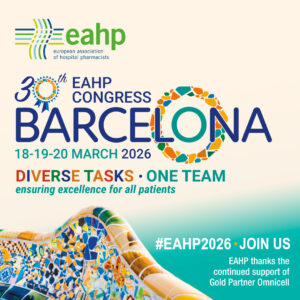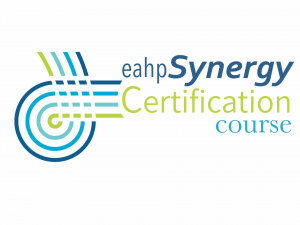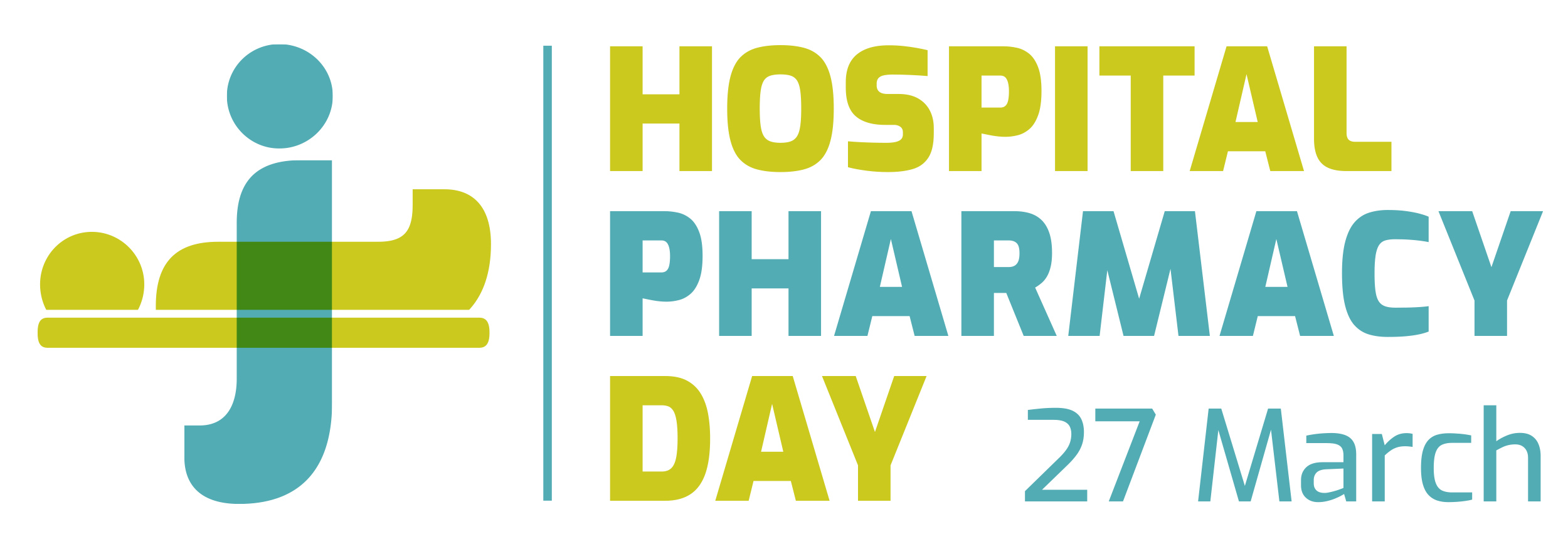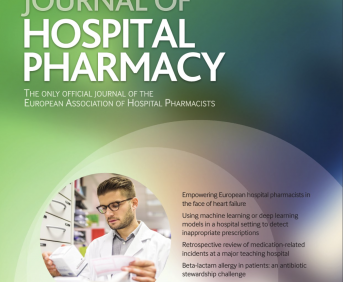AN OBSERVATIONAL MULTICENTRE STUDY TO PROMOTE INDEPENDENT CLINICAL RESEARCH AND EDUCATION TO YOUNG HOSPITAL PHARMACISTS: THE QOSMOS PROJECT (submitted in 2019)
Pdf

European Statement
Education and Research
Author(s)
Daniele Mengato, Federica Milani, Laura Agnoletto, Nicoletta Freddi, Roberta Rampazzo, Vera Damuzzo, Nicola Realdon
Why was it done?
Recently, the national monitoring of Hospital Pharmacy Students (SHP) highlighted a lack of education in clinical research and in designing of independent studies among students. To fill this gap, we established a collaboration between Scientific Associations and Student Organisations.
What was done?
In 2017 the Italian Society for Clinical Pharmacy and Therapeutics (SIFaCT) and the National Association of Hospital Pharmacy Students (ReNaSFO) established a join action to improve students’ research competencies. To this end, we designed the QOSMOS study: “Quality Of life (QoL) in Multiple Sclerosis (MS): a Multicentre Observational Study”.
How was it done?
The study has both educational and scientific objectives. Scientific objectives were to update data on QoL in MS and to correlate QoL to drug therapy. Regarding the educational challenge, every SHP participant received, by a panel of expert colleagues, the methodologic basis on observational studies and how to arrange teamwork activities. SHP could participate either as co-investigators or as members of teams which managed ethical approval, case report form (CRF), study monitor and data analysis. Investigators enrolled patients, collected clinical data and administrated a CRF, consisting of a questionnaire on QoL (MSQoL54).
What has been achieved?
22 SHP from 16 Italian centres, equally distributed from Southern to Northern Italy, joined the project. 20 SHP participated as co-investigators, one was included in the Scientific Committee of the study and 1 participated in the team dedicated to the Ethical Committee. We enrolled 341 patients with relapsing/remitting MS from May 2018 to June 2019 (median=20 per centre). The study achieved primary and secondary endpoints and pointed out a significant decrease in QoL related to physical health in patients treated with teriflunomide compared to other oral drugs (p=0.002).
What next?
Results will be presented in a scientific paper for submission to a peer-reviewed journal. This final aspect of the project has an educational goal once again, namely to bring young colleagues closer to writing and disseminating science. As QOSMOS gained good results, a new study investigating the role of clinical pharmacist in the Infectious Disease Department is starting with the goal to investigate optimisation strategies for treatment of HIV-positive patients.
DEVELOPMENT OF GUIDELINES FOR SAFE HANDLING OF ONCOLYTIC VIRUSES (submitted in 2019)
Pdf

European Statement
Clinical Pharmacy Services
Author(s)
Faten Ahmad Díaz, Eugenia Serramontmany Morante, Carla Esteban Sánchez, Pablo Latorre García, Montserrat Carreres-Prieto, Javier Martínez Casanova
Why was it done?
Different critical points were detected: 1) some OV dose prescription depends on tumor size, 2) special storage conditions, 3) special safety measures related to preparation to prevent cross-contamination and technician exposure, 4) special transport conditions in a safety container, and 5) safe administration. The increasing number of clinical trials with OV combined with the identified critical points implies a better coordination between the different departments involved.
What was done?
Development of a standardised working procedure for the safe handling considerations, storage requirements, and modes of administration of oncolytic viruses (OV) in patients with cancer.
How was it done?
Different meetings were arranged with a multidisciplinary team to standardise procedures, in order to avoid errors: 1. The pharmacist validates the prescription volume reflected on the certified sheet according to the tumour size. Then, a pharmacy technician is authorised to remove the vials from the freezer to start the preparation. 2. Special −80ºC freezer is needed to preserve the OV. 3. According to the preventive medicine service, OV must be prepared in biological safety cabinet class II (BSC) with personal protective equipment. At the end of preparation, the BSC must be cleaned with the OV appropriate disinfectant and ventilated for 1 hour before restarting to work again. So, the OV preparation was established at 7 a.m. in order to avoid cross-contamination with the chemotherapy (first preparation in the day). 4. Safety transport must be considered, so OV is packaged in a special hermetic box. 5. The majority of the OV preparations are administered intralesionally at the radiology room so safe administration is needed to avoid the room contamination.
What has been achieved?
By using these procedures, it is possible to work with a single BSC, avoiding delays in the administration of other therapies while reducing the risk of mistakes.
What next?
These types of therapies represent a novel therapeutic modality: their preparation, administration and handling requirements differ from current therapies; pharmacists have an important role in developing new procedures to incorporate them into clinical practice. This protocol may be useful to other centres due to the lack of experience and standardised guidelines to work with this type of therapy.
DESIGN OF AN ANTI-HAEMORRHAGIC AGENTS PROTOCOL FOR AN INTENSIVE CARE UNIT (submitted in 2019)
Pdf

European Statement
Clinical Pharmacy Services
Author(s)
Mercedes Gómez-Delgado, Marta Valera-Rubio, Margarita Carballo-Ruiz, José Luis Ortiz-Latorre, Isabel Moya-Carmona
Why was it done?
Blood coagulation factors and their adequate use can be of particular importance in the treatment of massive haemorrhage, especially in the ICU. This initiative was taken in order to improve uptake and to avoid errors in the administration, which can be difficult in emergency situations.
What was done?
To define an emergency procedure that ensures correct management in cases of massive bleeding in an intensive care unit (ICU).
How was it done?
The development of drug use protocols for emergency situations is a simple task that facilitates health workers to manage them. Prioritising the drugs to be included in a protocol by a previous survey in a multidisciplinary setting is important to consider the different points of view. We carried out a review of the pharmacy service to the ICU needs of antihaemorrhagic drugs. ICU staff (doctors and nurses) were informed to reach an agreement about eligible drugs for being included in the protocol. ICU staff requested the inclusion of four drugs in the protocol according to the prevalence of use and the difficulty of administration: human fibrinogen, tranexamic acid, eptacog alfa and human prothrombin complex. We created a protocol with four information sheets, one of each drug, made of schematic information about: 1. Physical location (fridge or room temperature, number of shelf) and minimum safety stock (3 units of human fibrinogen, 4 units of tranexamic acid and 3 units of human prothrombin complex). 2. Indications and dosage according to the clinical situation and the patient characteristics (dosage adjustment according to renal or hepatic impairment, weight or age when applicable). 3. Recommendations for intravenous administration (flow rate, bolus, loading dose, dilution, mixture stability).
What has been achieved?
Mapping the information and dividing it into sections is essential for its rapid understanding in a high-stress work environment. The implementation of this protocol was well embraced by all the staff involved, since it allowed a more efficient health care circuit for the ICU staff. It also optimises the consumption of this type of more monitored drugs.
What next?
We will monitor the compliance with this protocol, as well as possible updates that may be beneficial for a better understanding of the forms of administration.
ROUTE TO CLINICAL PHARMACY: THE EXCHANGE PROGRAMME EXPERIENCE (submitted in 2019)
European Statement
Clinical Pharmacy Services
Author(s)
Chiara Inserra, Antonio Solinas, Chiara Panciroli, Branden Nemecek, David Zimmerman, J.Douglas Bricker, Piera Polidori
Why was it done?
Successful implementation of clinical pharmacy services are associated with improved prescribing practices. SIFO includes clinical pharmacy in their mission to line up with Section 4 of the European Statement on Hospital Pharmacy and is striving for implementation through advanced trainings for IHPs. The aim of this EP was to provide real world clinical pharmacy training to IHPs.
What was done?
Through international collaboration between Duquesne University School of Pharmacy in Pittsburgh (PA-USA) and the Italian Society of Hospital Pharmacy (SIFO) a clinical pharmacy exchange programme (EP) was established to provide clinical education to Italian pharmacists interested in advancing the profession. From 2010 to 2018, SIFO provided several grants to allow Italian hospital pharmacists (IHPs) to participate. In 2018, three IHPs from across Italy were selected for a 1 month experience to gain experience and insight into practices that they may use in their facilities.
How was it done?
The clinical training was created by Duquesne University to provide IHPs educational and first-hand clinical skills based on American clinical pharmacy practice and education. The training was individualised for IHPs’ interests including didactics and practical training. Sessions to discuss IHPs’ progress were conducted with the Dean and faculty of the programme.
What has been achieved?
IHPs had the chance to observe American pharmacy education and compare it to the Italian one. American university training was practical, well-coordinated with clinical activities, and based on a trustful teacher-student relationship. During practical training IHPs shadowed American Clinical Pharmacists (ACP) specialized in different areas: Infectious Disease, Cardiology, Oncology, Emergency Medicine, Internal Medicine, Community Pharmacy, Ambulatory Care. They were able to observe how ACPs validate prescriptions and are actively engaged in direct patient care, participating in bedside multidisciplinary rounds and making recommendations on therapies (drug interactions, dose adjustments, antibiotic selection). IHPs saw how technology investments, prioritisation of care, and availability of skilled personnel underlie American hospital pharmacy practice.
What next?
IHPs gained baseline clinical pharmacy skills to enhance care at their facilities; however, the widespread implementation of clinical pharmacy in Italy requires education reform, enhanced resources and integration of pharmacists within a multidisciplinary team. Implementation of small projects through collaboration with universities should be considered in the Italian hospital setting.
OPTIMISING WORKFLOW AND MEDICATION IN THE ACUTE WARD − BETTER USE OF PHARMACISTS’ SKILLS (submitted in 2019)
European Statement
Clinical Pharmacy Services
Author(s)
Mia P von Hallas, Trine RH Andersen
Why was it done?
Physicians in acute wards have limited time to see all patients. Time for medication history, reconciliation and review is limited, due to great patient turnover. The physicians did not consider the pharmacist medication review alone as a contribution to the workflow or to relieve the high workload.
What was done?
Through user surveys among the physicians in the Acute Ward, pharmacist tasks were adjusted to benefit the physician’s high work flow. Before the survey, pharmacists performed medication reviews which were communicated to the physician. The adjusted pharmacist tasks on the ward includes medication history, reconciliation and transfer of the medication to the electronic medicine module (Epic), securing up-to-date medicine data during hospitalisation.
How was it done?
A questionnaire was developed regarding four areas (Pharmacist competencies, Pharmacist tasks, Pharmacist medication review, Multidisciplinary teamwork) and distributed among the physicians. Based on the anonymous responses, the pharmacists adjusted their tasks to include medication history, medication reconciliation and transfer of medication to Epic, complying with the suggestions in the questionnaire survey. Obstacles were low percentage of respondents (15/33 (45%) prior to the initiative and 12/39 (31 %) after), and the large replacement of junior physicians in the period between surveys.
What has been achieved?
Pharmacists feel more part of the multidisciplinary team and attitudes towards the pharmacist service among physicians has changed. A new survey after implementation of the new workflow showed that 73% found medication reconciliation was a pharmacist task, compared to 29% before. After implementation, 90% of physicians believed that pharmacists could do medication review (67% before intervention). The acknowledgement that pharmacists were able to transfer medication to Epic was increased from 20% to 90%. The attitude has changed from considering pharmacists as medication advisers to considering pharmacists as part of the multidisciplinary team in the ward.
What next?
The questionnaire survey will be repeated annually to continually improve the workflow and contribution of clinical pharmacist services to the heathcare professional team in the acute ward.
CAN THE CLINICAL PHARMACIST INCREASE HOSPITAL STAYS’ PRICING? (submitted in 2019)
Pdf

European Statement
Clinical Pharmacy Services
Author(s)
Thibault Stala, Niels Martignene, Céline Monchy, Anne-Laure Lefebvre, Geoffrey Strobbe, Ali Hammoudi, Frédéric Feutry, Malgorzata Cucchi, Guillaume Marliot
Why was it done?
In France, hospitalisations’ reimbursement is linked to care severity. In this context, health care must be as comprehensive as possible on the comorbidities’ registration. As part of prescription validation, the clinical pharmacist can easily highlight comorbidities associated with specific treatments, in order to improve their codification and consequently to better valorise hospital stays.
What was done?
This work involves evaluating the ability of the clinical pharmacist to detect comorbidities related to certain treatments.
How was it done?
Six comorbidities, associated with the prescription of specific therapies, were chosen: – Dyskalaemia (potassium or polystyrene sulfonate prescriptions); – Neuropathic pain (NP) or anxio-depressive disorder (ADP) (amitriptyline, anafranil, pregabalin, gabapentin, duloxetine or capsaicin prescriptions); – Iron deficiency anaemia (IDA) (injectable iron prescriptions); – Hypovolaemia (HV) (ringer Lactate, serum albumin or gelatin prescriptions); – Hypercalcaemia (HC) (bisphosphonate and/or calcitonin prescriptions); – Severe infection (Inf) (linezolid, daptomycin, teicoplanin, aztreonam and carbapenem prescriptions). Retrospectively, all stays ending between 01/01/2019 and 31/03/2019, and containing at least one prescription of the previously mentioned therapies, were considered. Then, the medical records were analysed to verify the presence of the comorbidity corresponding to the prescribed drug(s). The coding was checked, otherwise, the comorbidity was added. Finally, the revaluation of the stays’ cost has been estimated.
What has been achieved?
The number of stays by suspected comorbidity, based on prescribed treatments, is : – 175 dyskalaemia; – 231 NP or ADP; – 155 IDA; – 124 hypovolaemia; – 41 hypercalcaemia; – 16 severe infection hypovolaemia and severe infection were quickly set apart because of the difficulty to confirm these comorbidities with the only retrospective medical record information. No stay with IDA or hypercalcaemia has been revalorised. The price of a single stay with dyskalaemia has been increased, by €530. However, NP or ADP has increased the cost of 6 to 13 stays, resulting in a total revaluation of €6000 to €11,000.
What next?
The stays’ remuneration is the hospitals’ main source of income. This work makes it possible to quickly determine if the clinical pharmacist can bring added value in the field of hospital stays’ pricing. The next step is the transition to forward looking. It would also be possible to assess other comorbidities.
SIMULATION CURVES MAY HELP TO ASSESS ANTIBIOTICS ORALISATION PROCEDURES (submitted in 2019)
European Statement
Clinical Pharmacy Services
Author(s)
Andreas von Ameln-Mayerhofer, Martin Breuling, Ina Geist
Why was it done?
In the context of antibiotic stewardship, rapid oralisation of a parenteral antibiotic is recommended in many antibiotic stewardship guidelines. Such a sequence therapy is easy to implement if both application pathways lead to comparable efficacy levels at the site of infection. However, this does not apply to all anti-infectives, in particular some beta-lactam antibiotics represent a challenge in therapy. Additionally, the information about this topic is very sparse in the literature.
What was done?
In order to achieve an improvement in antimicrobial prescriptions, we have addressed possible problems regarding oralisation of antibiotics. For this purpose, we graphically compared the simulated efficacy levels of parenteral and oral forms of beta-lactams.
How was it done?
We programmed a computer based procedure that allows a simulation of plasma levels of antibiotics upon intravenous versus oral administration. Based on the obtained data and EUCAST-based MIC-distributions for a set of bacteria, we assessed the respective putative clinical actions.
What has been achieved?
Our simulations show that some oral beta-lactams do not reach the PK/PD condition of a sufficient therapy (fT>MHK) in the approved dosage. The simulations have been used for education seminars with physicians and partly led to an improvement in oralisation procedures. Additionally, an oralisation standard has been established.
What next?
Our next step is to develop a special prescription form for oral antibiotics which will enable us to control prescription behaviour even more effectively. We plan to monitor the prescription habits for anti-infectives more closely before and after establishing the prescription form.
TOOL FOR INTERDISCIPLINARY COLLABORATION AND SHARED DECISION MAKING (submitted in 2019)
Pdf

European Statement
Clinical Pharmacy Services
Author(s)
Pernille Printzlau, Nanna Skyttegaard Mortensen, Signe Kristensen, Troels Bygum Knudsen, Nathalie King Otoo
Why was it done?
When the pharmacists make medication reviews it is often a long, detailed review with several interventions. A tool that would quickly give the physician an overview of the interventions suggested by the pharmacist was needed. Furthermore, a tool was needed in the process of shared decision making between the physician and the patient regarding the possibilities of deprescribing.
What was done?
We made a tool to improve the interdisciplinary collaboration around medication reviews and to help the process of shared decision making. The tool categorises interventions suggested by the pharmacist in red-yellow-green boxes, indicating the order of the interventions recommended by the pharmacist.
How was it done?
The tool was developed and tested by using the Model of Improvement. The physician stated that the tool gave him the needed overview and, in his experience, furthermore added value by visualising the interventions to the patient. Patients were interviewed after the consultation to evaluate how they perceived the tool and whether they felt involved in the decision making regarding their treatment and deprescribing.
What has been achieved?
A manageable and operationalisable tool for the physician to get a quick overview of the interventions suggested by the pharmacist. Furthermore, the tool visualises the interventions to the patient and supports the process of shared decision making during the consultation.
What next?
At our hospital we have clinical pharmacists making medication reviews at several different wards. The next step is to distribute the tool to pharmacists at other wards to strengthen the interdisciplinary collaboration and ensure the largest profit of the pharmacist’s medication reviews. We are also working on developing a similar tool to categorise found side effects to help the physician when deprescribing.
ENHANCING MEDICATION SAFETY BY IMPLEMENTING AND IMPROVING THE USE OF A SMART PUMP DRUG LIBRARY IN A TERTIARY HOSPITAL (submitted in 2019)
European Statement
Patient Safety and Quality Assurance
Author(s)
Mohammed Almeziny, Maha Aljuhanei , Fahad Alkharji
Why was it done?
Smart infusion pumps have been introduced to prevent medication errors and they have been widely adopted by healthcare. They incorporate safeguards such as soft and hard dosage limits.
What was done?
A smart pump was implemented in a tertiary hospital.
How was it done?
A task group was formulated from all involved parties to cover all issues related to practice, and it involved nursing and pharmacy staff to overcome all obstacles that may face the project; in addition the information technology (IT) department was involved to determine the facilitation of all technical issues. At the beginning the group faced two main barriers: creating the initial drug library which was a significant amount of work for the pharmacy, then uploading the drug library. In addition, all these works were to be carried out manually by the medical engineering. The quantitative data available from the smart pump software were used to improve drug library use. The team started to collect feedback from and communicate feedback to direct care nurses about drug library usage via e-mail, staff meetings, a “whatsapp” group and one-on-one conversations. This included asking nurses why the drug library was not being used regularly. The most frequent responses included “The pump is hard to use,” “The list doesn’t have the medications I need and, “It’s just easier to use the rate-based programming feature”.
What has been achieved?
The pump library usage percentage for total infusions was raised from a baseline of 2.85% to 30.97% in the first week. After careful review by the nursing, pharmacy, and medical leadership, some changes to the library were made. These included standardising drug concentrations in the pump library and providing ongoing staff education as well as implementing the best practices cited in the ISMP’s guidelines for the use of smart pumps; and running daily usage and weekly soft limit override reports from the pump library. Furthermore, a new category, “feeding”, was added to pump library; finally all medications and plain fluids were added to the pump library.
What next?
A Bar-Code Medication Administration System is needed (BCMA), to ensure the right patient gets the correct drug, dose and route at the right time.
SAFETY IMPROVEMENT IN PAEDIATRICS: ASSISTED PRESCRIPTION OF INTRAVENOUS MIXTURES (submitted in 2019)
Pdf

European Statement
Patient Safety and Quality Assurance
Author(s)
Iván Maray Mateos, Miguel Alaguero Calero, Adrián Rodriguez Ferreras, Cristina Calzón Blanco, Cristina Álvarez Asteinza, Lucía Velasco Roces, Ana Lozano Blazquez
Why was it done?
Intravenous drugs in the paediatric population bring up additional issues than the usual in adults. In their prescription, not only does the dose have to be adapted to the patient’s weight, the volume in which the drug is diluted must also be adapted to the reduced fluids requirement without jeopardising the stability of the mixture. In view of these facts, IV drug prescription in paediatrics implies a higher risk of medication errors. This new prescribing system simplifies prescription and reduces risks.
What was done?
Development of an assisted prescription system of intravenous mixtures adapted to paediatric patients in which both the drug dose and the diluent volume are automatically calculated according to the patient’s weight.
How was it done?
A literature review of drug dosing in paediatrics and their stability in different diluents was performed. For every drug the following parameters were considered: maximum dose in children (mg/kg), maximum concentration allowed (mg/ml), common doses and volumes in adults. Using these values, a system was built which calculated drug dose and diluent volume according to the patient’s weight and the maximum concentration allowed for stability reasons. For safety and to ease the preparation, the diluent volume in millilitres was rounded up to the next 10. In order to avoid overdosing overweight or older paediatric patients, maximum dose and diluent volume were narrowed down to the usual quantities in adults. Ultimately, this system was integrated in the electronic prescription system. A protocol was created, named “drug name” IV mixture PEDIATRICS. So, by selecting this protocol in a specific patient, the target dose and the diluent volume are automatically calculated.
What has been achieved?
This system was implemented for 38 drugs. From July 2018 to April 2019, 910 IV mixtures have been prescribed from the following Anatomical Therapeutic Chemical (ATC) groups: A02 Drugs for acid related disorders (39), J01 Antibacterials for systemic use (287), J02 Antimycotics for systemic use (3), J05 Antivirals for systemic use (8), A04 Antiemetics and antinauseants (175), N02 Analgesics (395), N03 Antiepileptics (3).
What next?
This method could be implemented in other electronic prescription programmes. The system must be updated by the Pharmacy Department, introducing new drugs and constantly reviewing stability databases, posology regimens, and information regarding dilution of parenteral drugs.


























